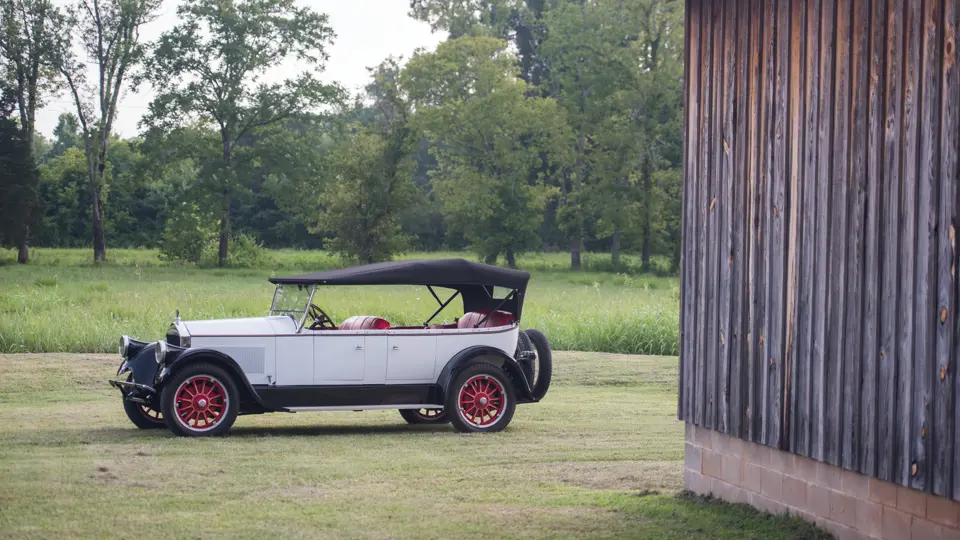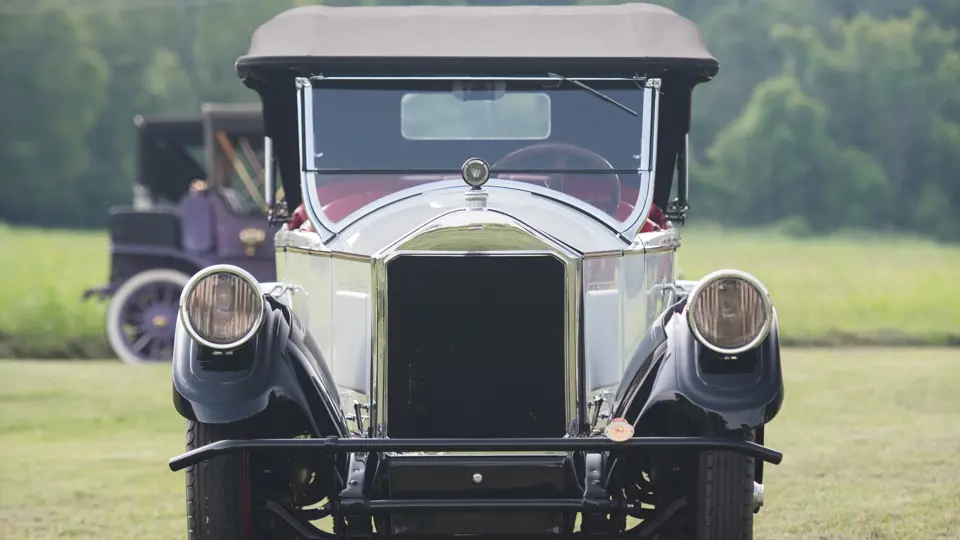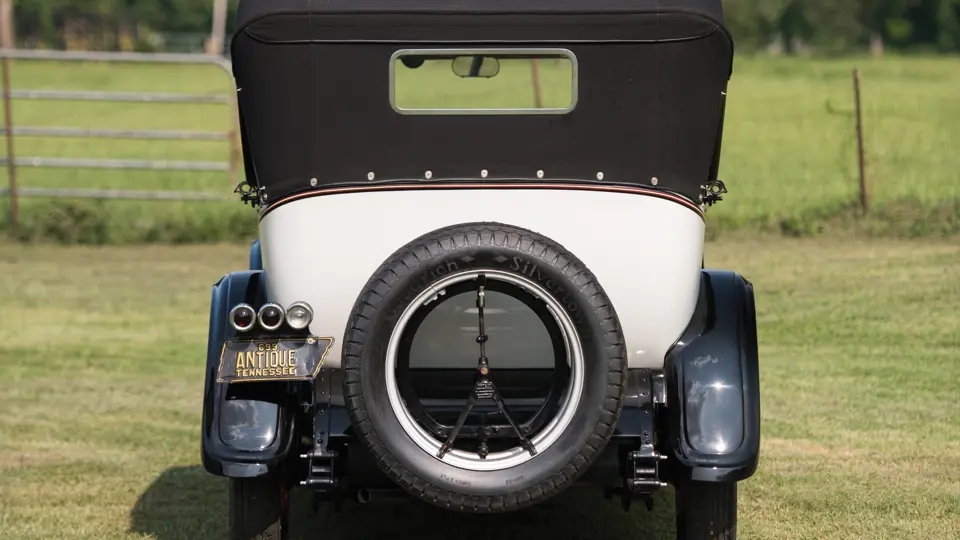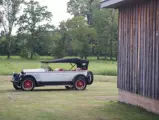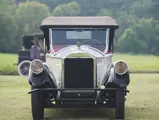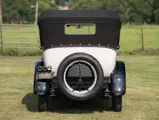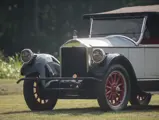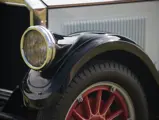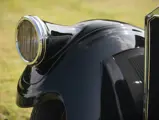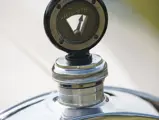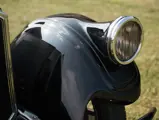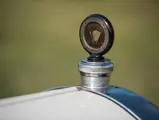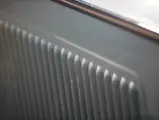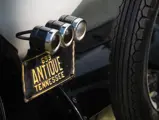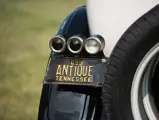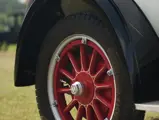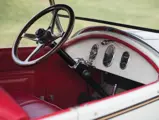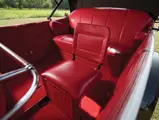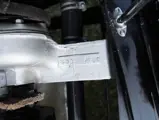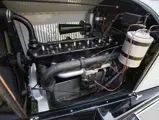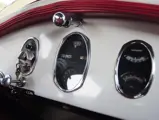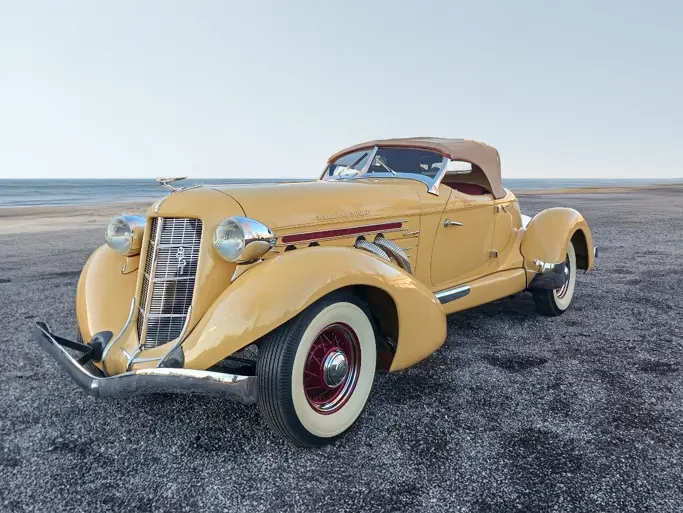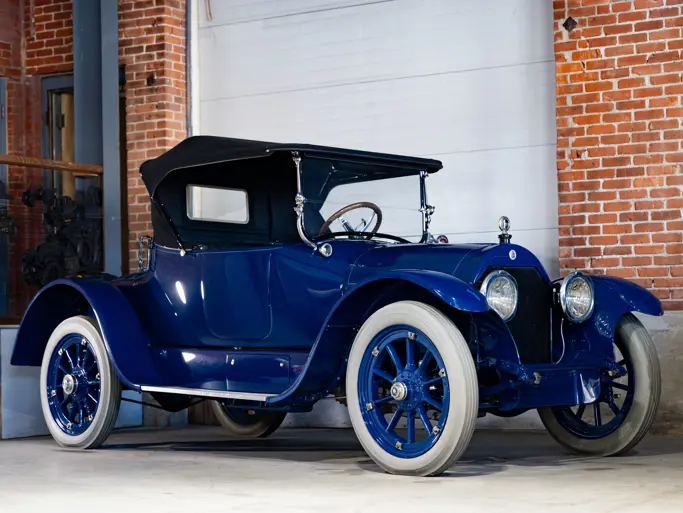70 bhp, 288 cu. in. inline L-head six-cylinder engine, three-speed manual transmission, solid front axle and live rear axle with semi-elliptical leaf springs, and four-wheel mechanical drum brakes. Wheelbase: 130 in.
By the mid-1920s, American automakers were broadening their product lines, both in size and price. In many cases, these new models were smaller and less expensive than their “parents,” and some created new “companion” nameplates in order to maintain the distinction. Paige’s Jewett and Hudson’s Essex were early examples. Others merely created a new model name or number and sold the cars by the parent name. Locomobile’s Junior 8 was an example of the latter, as is the car being sold here, the Pierce-Arrow Model 80.
The George N. Pierce Company, of Buffalo, New York, had firmly entrenched itself in the “Three-Ps” of luxury cars: Packard, Peerless, and Pierce-Arrow. The Pierce-Arrow Model 33, which sold for $5,250 to $8,000 in 1924, was out of reach of all but the most affluent buyers. Peerless and Packard prices started near $3,500 (Peerless even had a sub-$3,000 model), so clearly Pierce was at a disadvantage. The Model 80, introduced late in 1924, took care of the problem with bodies catalogued at $2,895 to $4,045. They were eight inches shorter than the “big Pierces” and lighter by more than half a ton. Instead of the 33’s big, 141-cubic inch, 100-brake horsepower T-head six, the 80 had a 70-brake horsepower, 288-cubic inch L-head. The Model 80 not only boosted Pierce-Arrow sales (by a factor of eight in the first year), but it also helped to strategically reposition the company by the time eight-cylinder engines were introduced in 1929. Those Model 125 and 126 eights owed more to the Model 80 and its 1928 Model 81 successor than to any previous Pierce-Arrow.
This 1925 Pierce-Arrow, one of the first Model 80 cars, was acquired by Harold Coker from William Hinkle, of Thomasville, North Carolina, in 1993. He entrusted it to Lester Rice’s Peggy Craft Restorers in Harriman, Tennessee, for a full rebuild, resulting in an AACA National First award the following year. It subsequently received Senior status, medallion number 1400527.
Painted light gray with black moldings and fenders, it is accented with red and beige pinstripes on the belt molding. The upholstery is red leather with wide pleats, which contrasts nicely with the body. The top is black canvas and in very good condition. The paint and chrome brightwork are similarly very good. The instrument panel has a Waltham speedometer-clock, showing 22, 882 miles, and ammeter and oil pressure gauges. An Arro-Meter on the radiator, basically a MotoMeter with a broad needle indicator in place of a thermometer tube, keeps track of the coolant temperature.
The engine compartment is clean and well detailed. The customary Pierce-Arrow attention to detail manifests itself in the oil filter on the right-hand side. A large cast-aluminum affair, it hosts a canister element that operates as a by-pass filter on the engine, long before such filters became commonplace in the industry.
The tires are 6.00-22 B.F. Goodrich Silvertown blackwalls mounted on red artillery spoke wheels. There are dual spare tires on the rear of the car. It is a strong runner, able to keep up with traffic and well suited to touring. It is a vehicle that can be driven and enjoyed as well as shown.
One look at this sporty Pierce-Arrow demonstrates why the Model 80 was so popular.





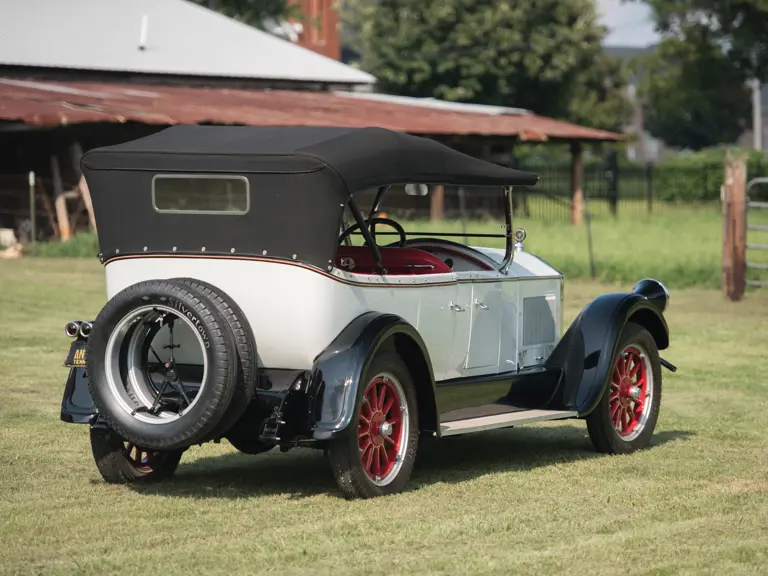
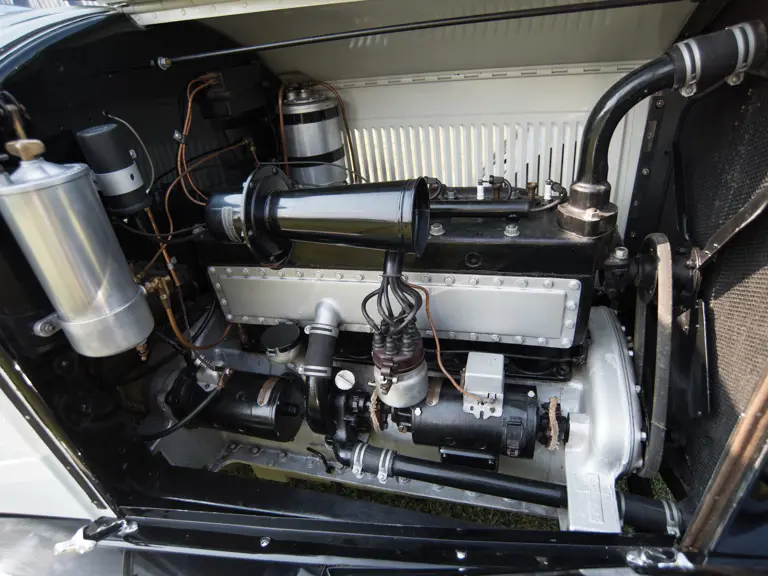
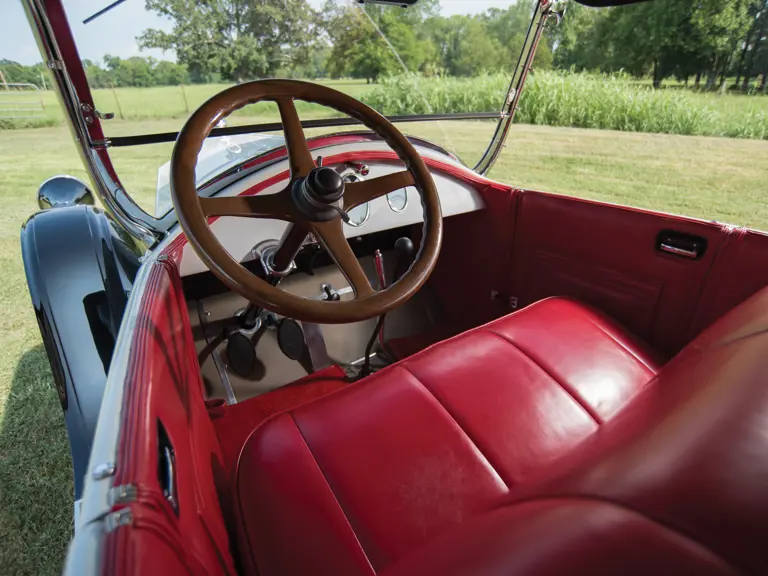
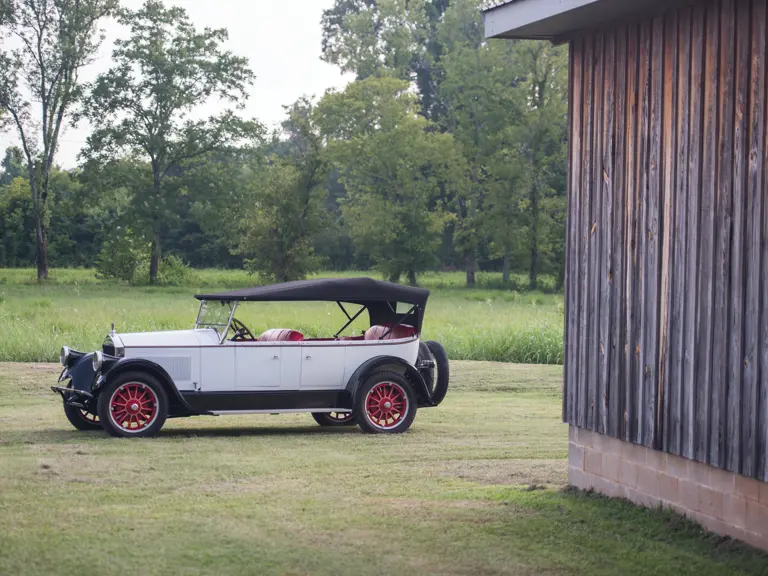
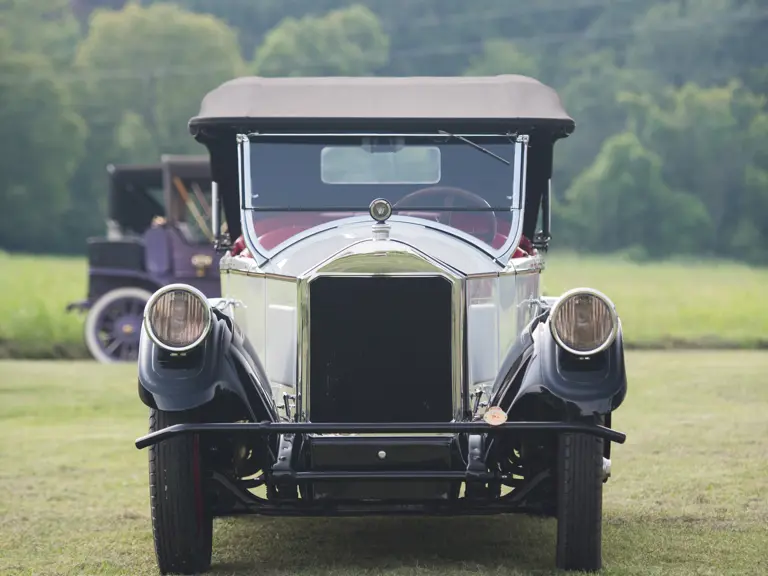
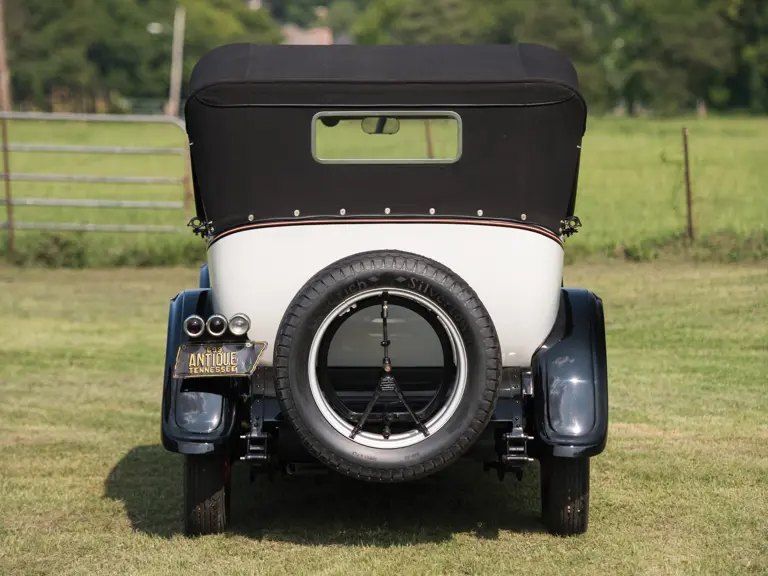

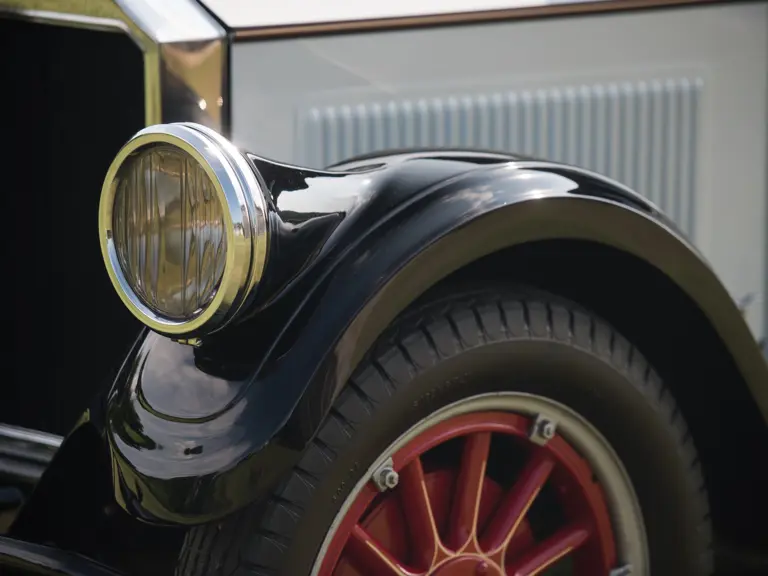
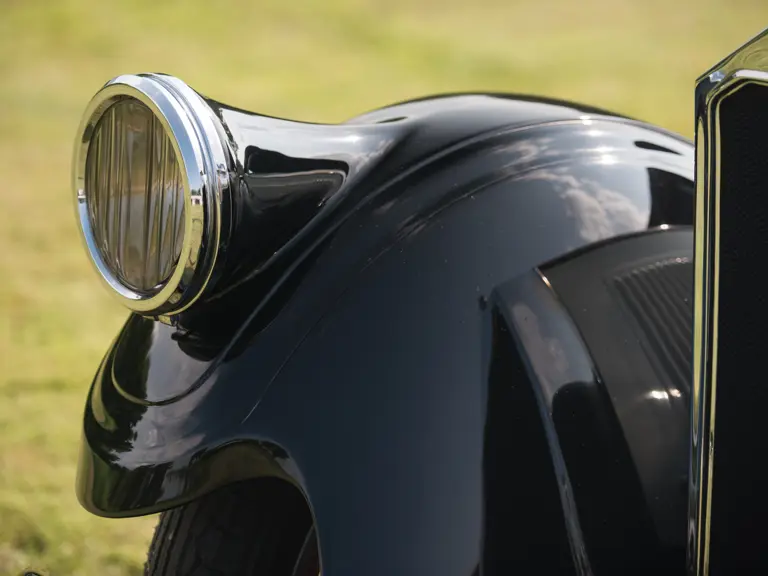

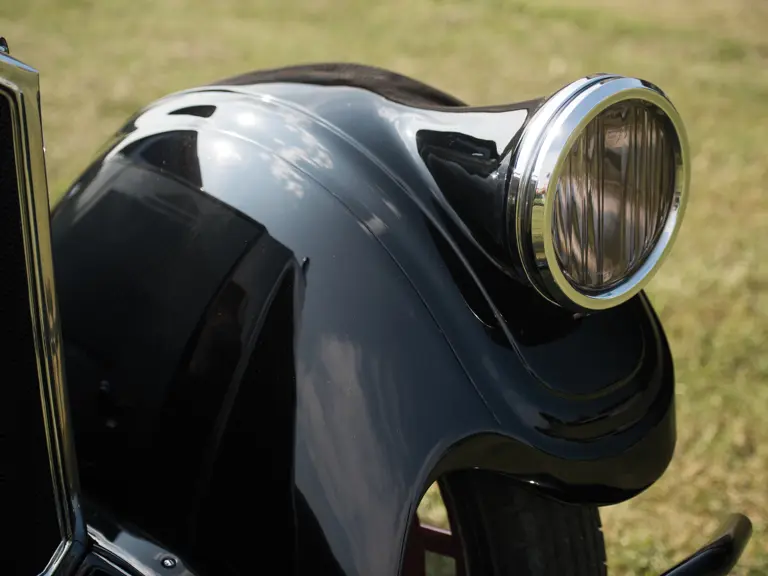
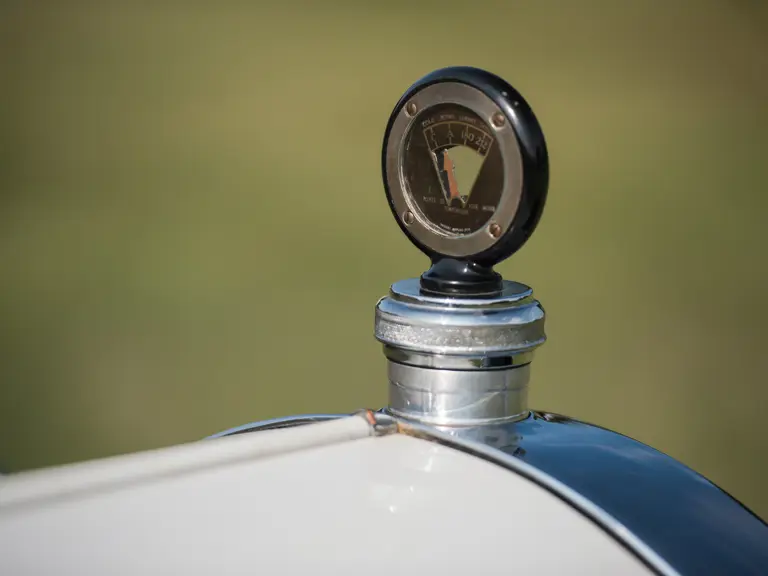
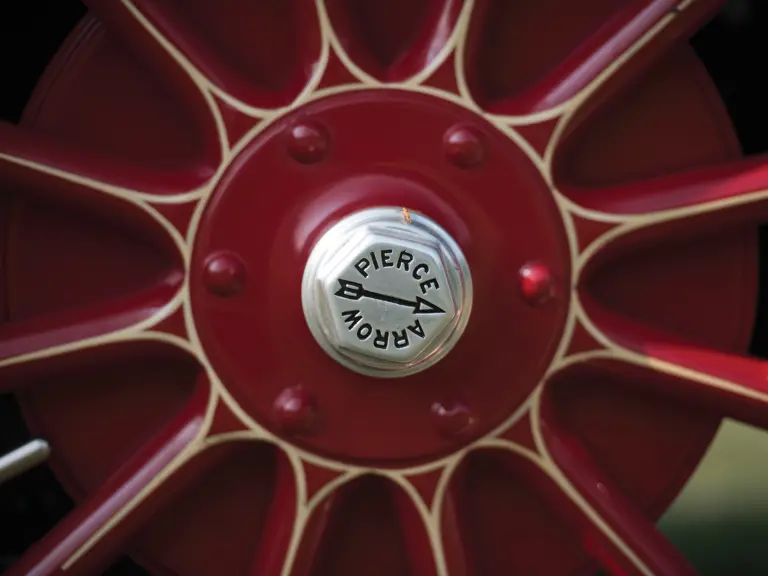
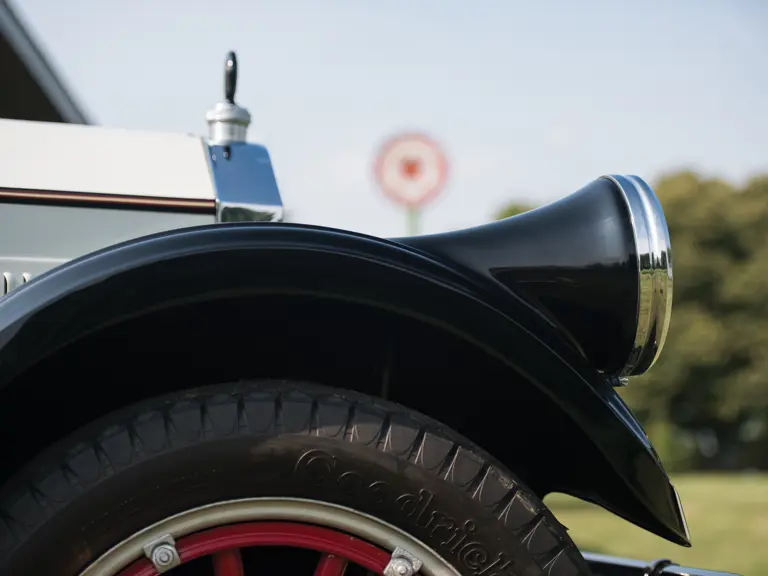
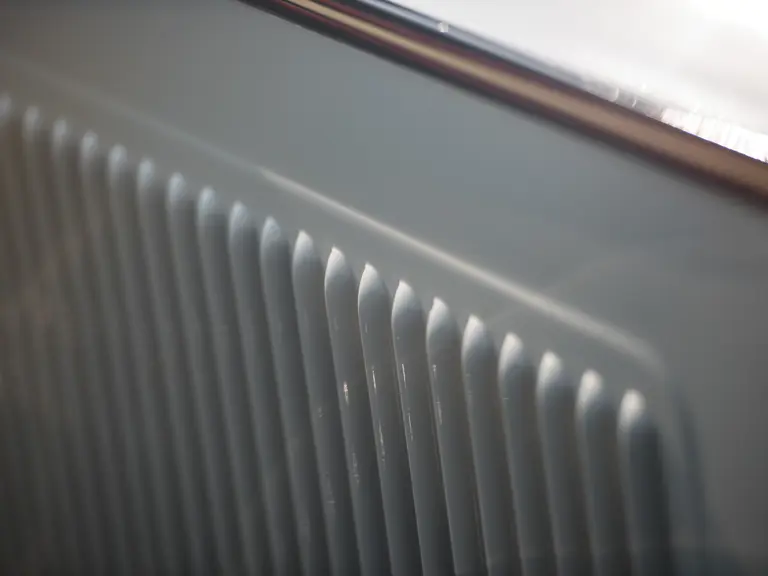


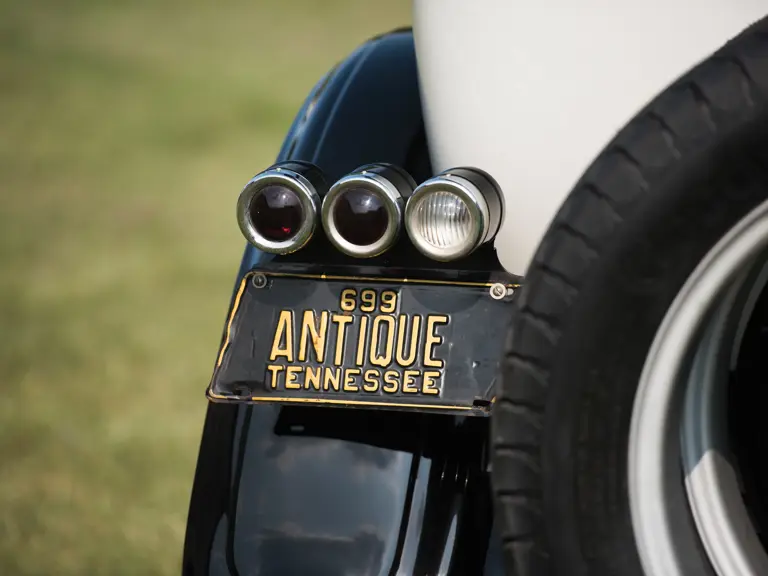
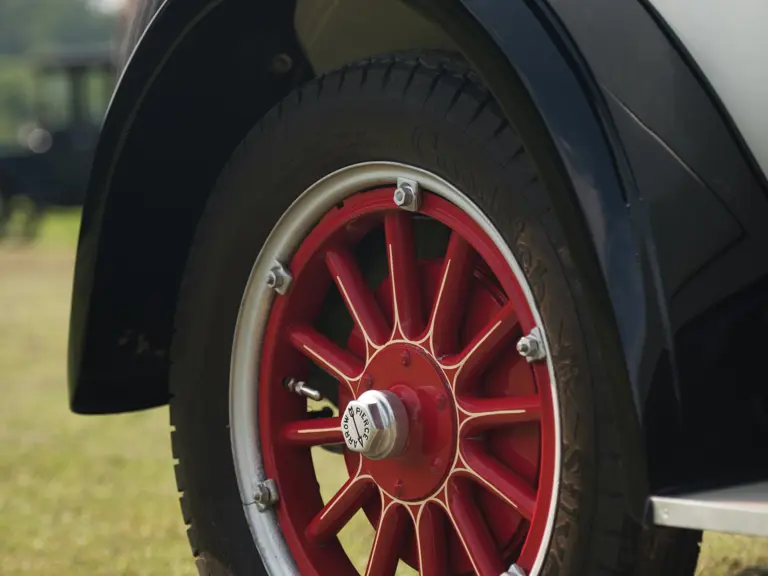
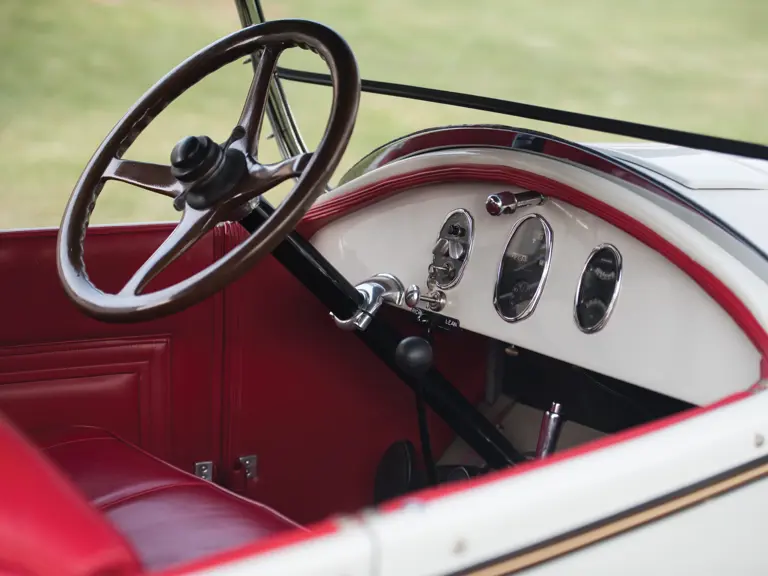
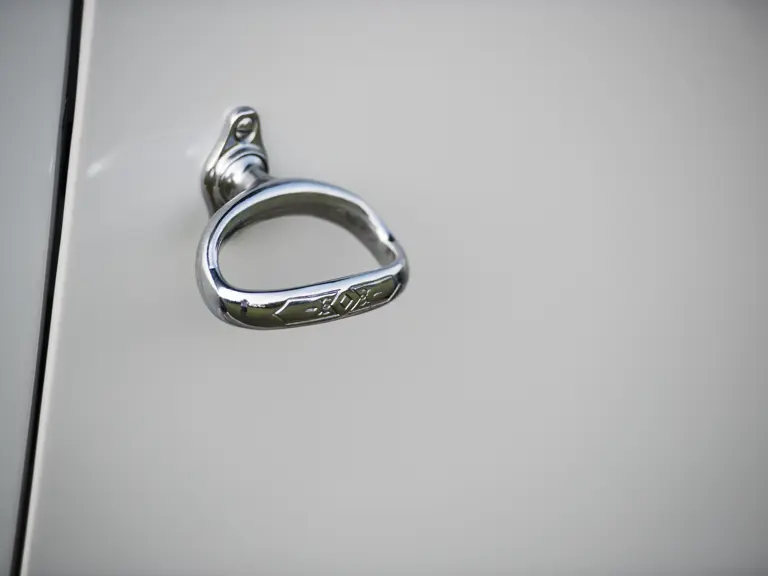
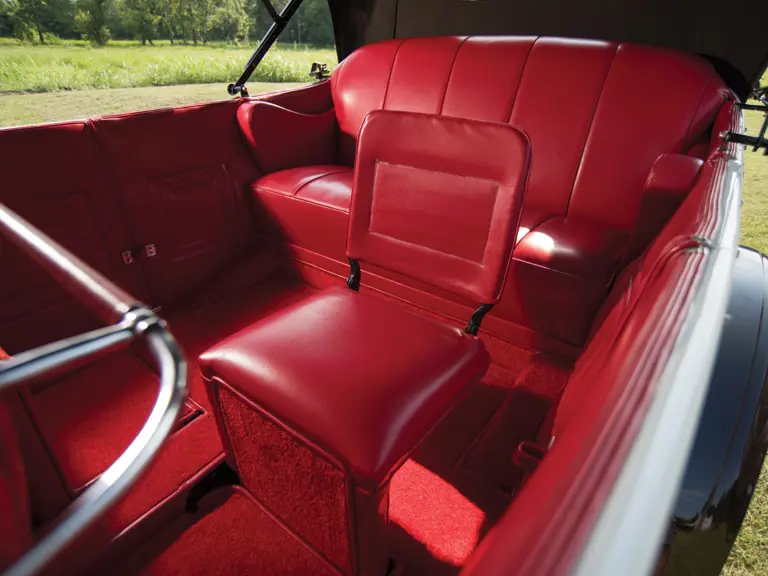
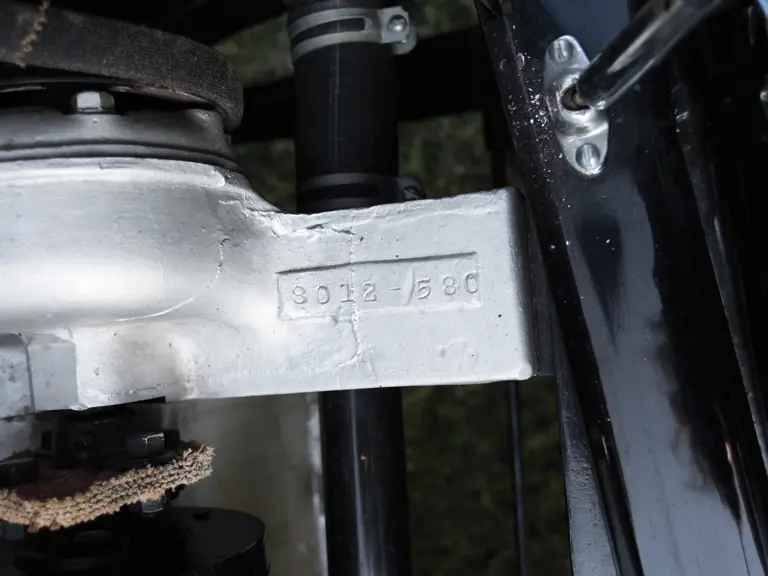
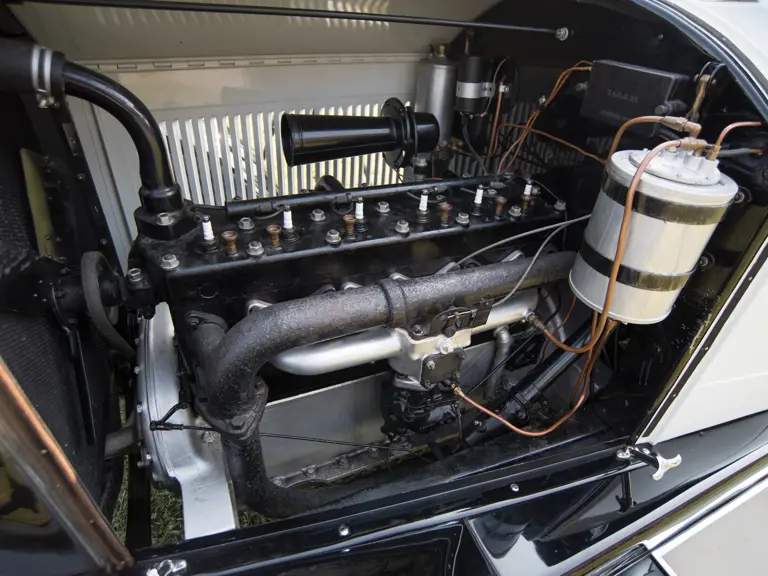
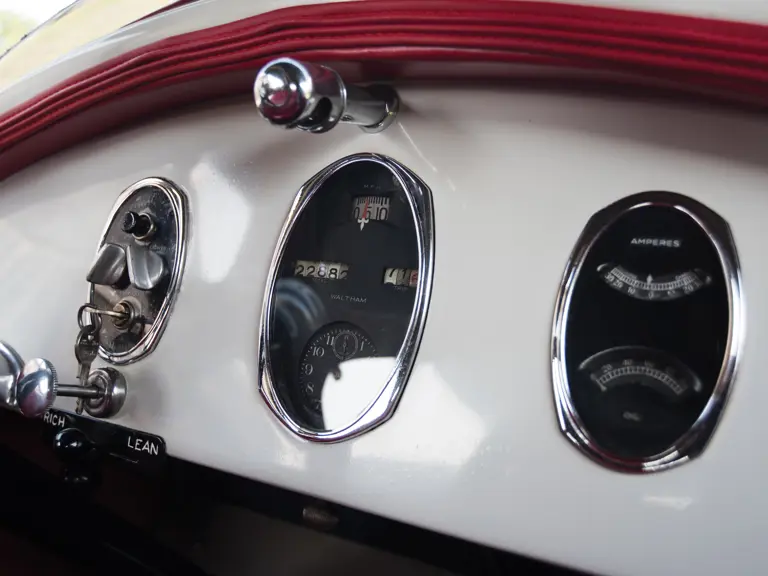

 | Hershey, Pennsylvania
| Hershey, Pennsylvania
